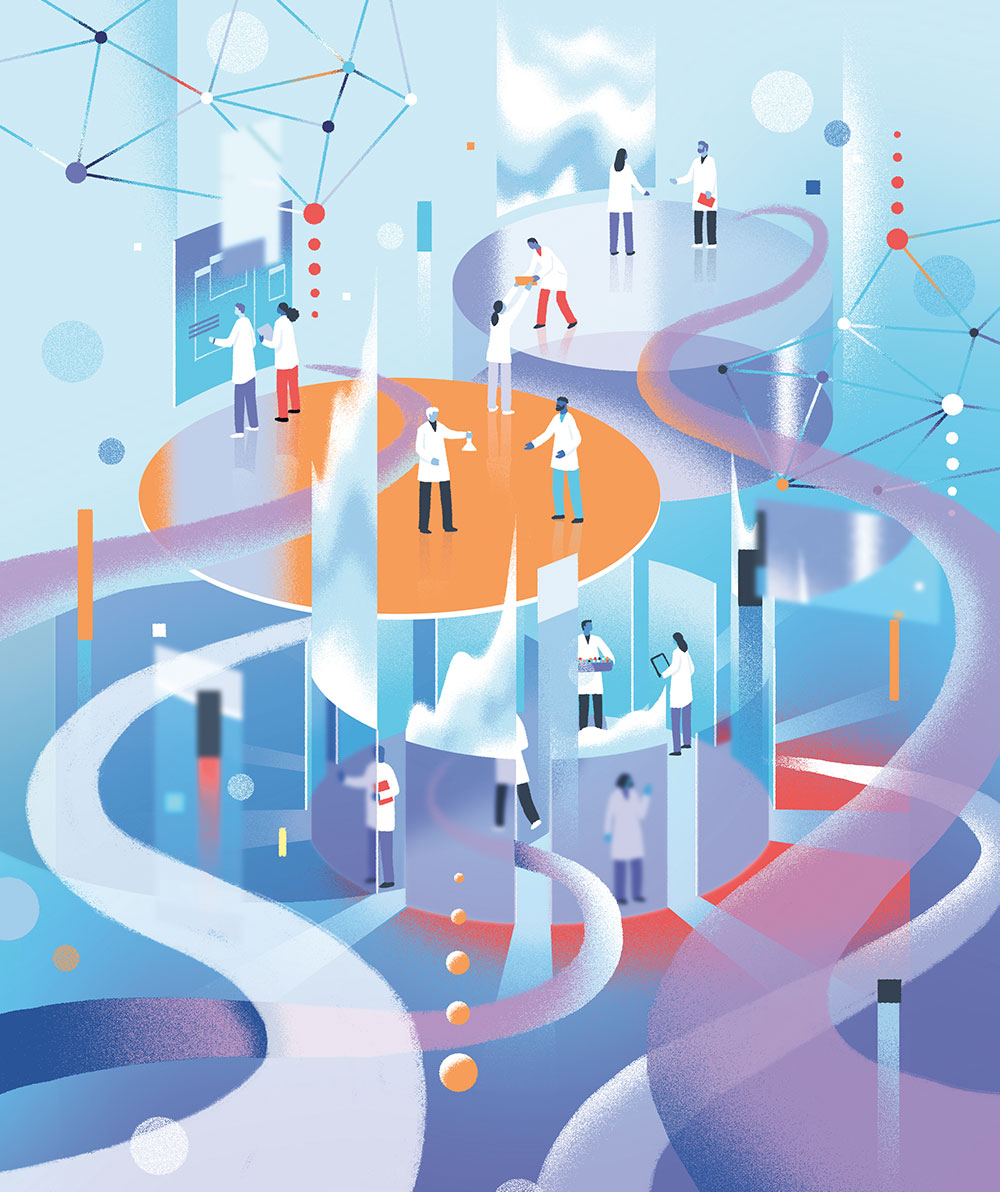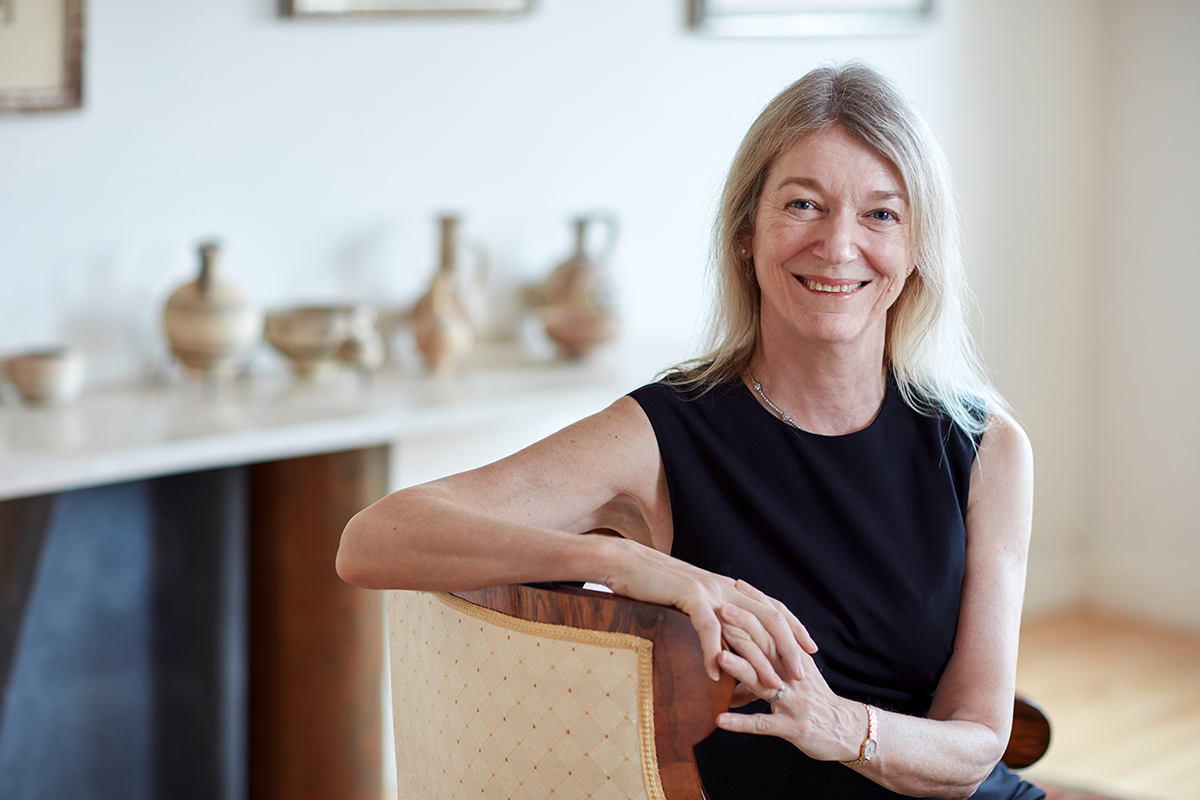
Interview
Philanthropy 2.0
Bioscience needs all the help it can get, says Cori Bargmann. And private foundations are in a unique position to open new doors to discovery, create stronger scientific communities, and make medical innovations accessible to people everywhere.
By Eva KieslerJohn D. Rockefeller wasn’t born rich. At age 16, working long hours as an assistant bookkeeper, he earned just $16 a month, the equivalent of $500 today. A conscientious young man, he nevertheless donated six percent of his earnings to the Northern Baptist church he attended each Sunday—and as his income grew, so did his charity.
By the turn of the 20th century, Rockefeller had become the wealthiest man in modern history and a keen patron of medicine, research, and the arts. In creating The Rockefeller Institute, the country’s first biomedical research institute now known as The Rockefeller University, and supporting other scientific enterprises, he was among the first private citizens to position the nation for leadership in basic science.
Today, a new generation of donors is rewriting the playbook for biomedical research. For example, several foundations spun off from the tech boom, including the Bill and Melinda Gates Foundation and the Chan Zuckerberg Initiative (CZI), are pumping billions into bioscience labs to support high-risk, high-reward projects, many of which wouldn’t happen without their sponsorship. “We are seeing a new flowering of philanthropy that will allow us to do brand new things in science,” says Rockefeller’s Cori Bargmann, the Torsten N. Wiesel Professor, who for the past five years has split her time between her own neuroscience lab in New York City and CZI in California.
As Head of Science at CZI, she oversees a grant program that thus far has awarded close to $1 billion with the goal to support research to cure, prevent, or manage all human diseases by the end of the century. We spoke with Bargmann about the growing impact of philanthropies and their opportunity to make science more efficient, useful, and just.

Here in the United States, the federal government provides ample support for basic research. Why do we need contributions from private donors, as well?
I think it’s inherently a good thing that labs get support from several types of sources. Different funding organizations operate under different strategies, and philanthropists often bring expertise from other areas like the tech or business sectors, introducing new ways to drive science forward and maximize its impact. The result is a more diverse ecosystem of funders that will ultimately allow us to get more done. It makes us less likely to get stuck and gives us the freedom to try new things.
It’s wonderful that we have the National Institutes of Health and the National Science Foundation, which fund a vast spectrum of biomedical science. Yet there are limitations to what areas these agencies will support and the time frame of their commitments, and philanthropies will often seek to complement government priorities. At CZI, we invest in key areas that will not get adequately funded by federal agencies but are nevertheless poised to yield transformative discoveries, the kind of projects that might unlock progress in many fields at once. And we take a longer view, supporting research whose impact may take 20 or more years to show up.
What are some areas where philanthropic support can have a big impact?
The NIH organizes its support under disease categories, and diseases affecting many Americans, like cancer or cardiovascular disease, tend to have the biggest budgets. This means that rare conditions—or conditions that are rare in the United States but more common in other parts of the world—may get sidelined unless private donors or nonprofits step in. Also, a system focused on diseases may fail to support other important things, like the development of new technologies.
Take microscopy, for example. It has enabled progress in research on virtually every disease, yet no major government program is explicitly dedicated to it. Who, then, will make critical investments in the development of new techniques? It’s one of the ways philanthropies like CZI can make vital contributions.
A diverse ecosystem of funders makes us less likely to get stuck, and allows us to try new things.
Another is to invest in young scientists and make it easier for them to switch fields. Traditional funding systems tend to reward established researchers for their past successes, encouraging them to keep doing what they’re doing, while being less supportive of new talent and new endeavors.
What are the typical roadblocks to innovation?
It depends on the project, and the only way to find out is to speak with the scientists involved. Sometimes their answer will surprise you—it’s not always about money.
A project may stall because of intellectual hurdles, for example, in which case the scientists may need help finding collaborators with the right expertise. So, to maximize their impact, funding organizations must do more than write checks. Community building is key, as has been beautifully demonstrated by the Simons Foundation, among others. At a time when autism research was mainly pursued by childhood education experts, the foundation transformed it into a burgeoning bioscience field by bringing together expert clinicians, patients, and scientists studying everything from developmental biology to electrophysiology. You almost can’t help learning from each other in such an environment.
How might funding organizations do a better job of supporting the most promising scientists?
A commitment to equity is a good starting point. There will always be more great scientists than there are resources to support them, and you need to do a great deal of work before you can make informed decisions. You need to look at everything each applicant has done in order to create a level playing field, a system in which everyone has the same chance to get funded—regardless of where in the world they come from, whether they’ve trained in a famous lab, or whether their papers have been published in prestigious journals.
One thing I’m particularly proud of is that CZI, rather than taking a U.S.-centric perspective, now funds scientists in 61 countries and counting. For example, we just launched a grant program across Africa, Latin America, and former Soviet countries—places where there are many terrific scientists but a dearth of science funding. We’re also supporting Open Science, a movement to make scientific data freely available to access and free to publish, to benefit scientists in under- resourced countries.
It is also important to recognize that there are different ways to be a scientist. Science needs support for systematic work like the Human Cell Atlas, a massive ongoing project to map all human cells and their molecular features; and it needs eclectic, curiosity-driven investigations that may generate chance discoveries. For example, green fluorescent protein, a molecular marker used to study all kinds of biological processes, was discovered when a group of marine biologists wanted to know why a certain type of jellyfish glows in the dark.
Can you share more of your thinking around equity in science?
There is so much work to be done on this front. Equity must be achieved on many levels—not just in terms of who gets to do the science but also what kind of science gets done and how it gets done, who gets to be at the table making the decisions, and who ultimately gets access to new medical treatments and other scientific innovations.
We have a lot to learn from past inequities. For example, today women are at significantly higher risk for dying when they have heart failure, largely because of huge gaps in our understanding of how the condition develops and manifests in the female body. Researchers spent decades studying cardiovascular diseases, but all clinical trials were done in men.
Similarly, people of African descent are more likely than those of European descent to die from kidney diseases, raising the question of whether our current investment in this field is adequate. And when new treatments are developed, will they be affordable enough for the populations that most need them?
You mentioned that we need to reevaluate who gets to guide decisions about biomedical research. What role do you see for patients?
I think patients have tremendous power to build support for research on their own diseases. CZI and a number of other foundations are now supporting patient groups, and there is real magic in that partnership. This has been especially evident for rare diseases, where research has been kick-started as patients began to organize on internet platforms. Suddenly, hundreds of patients with the same poorly understood disease would come together and compare notes, making scientific observations possible.
What will be the next big thing in bioscience?
An interesting change is under way as technological achievements that would have been impossible five years ago—in single-cell biology, microscopy, and artificial intelligence, for example—are becoming routine. Increasingly, these techniques are making it possible to create a dynamic and unified understanding of human biology.
Until now, we’ve mainly been looking at snapshots of biological processes, observing them one moment at a time and one system at a time. But we know that the body’s systems work together—our immune system communicates with our nervous system, for example, and we see that COVID affects anything from blood clotting to your sense of smell. Scientists will soon be able to take their research to the next level by studying the body in action, watching molecular events play out in real time and across spatial scales. Human biology is incredibly vast, and the next 10 years might utterly transform our understanding of health and disease—perhaps leading to medical advances we cannot even imagine yet.